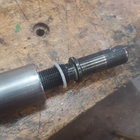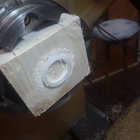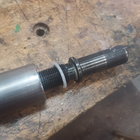john lucas
AAW Forum Expert
I have always had this problem on my 3520A. Just saw it twice on 3520C's at the symposium. If you crank the tailstock quill all the way back it locks up the handwheel and takes a lot of force to release it. You learn not to fo that but still every once in a while it happens. I decided to solve the problem. The problem happens because the 2 mating surfaces are very precise so it's kind of like snapping your chuck against the spindle face. Takes a fair amount of effort to break it free. I turned a washer made from UHMW and it stops the problem. I think any fiber or plastic would work.





